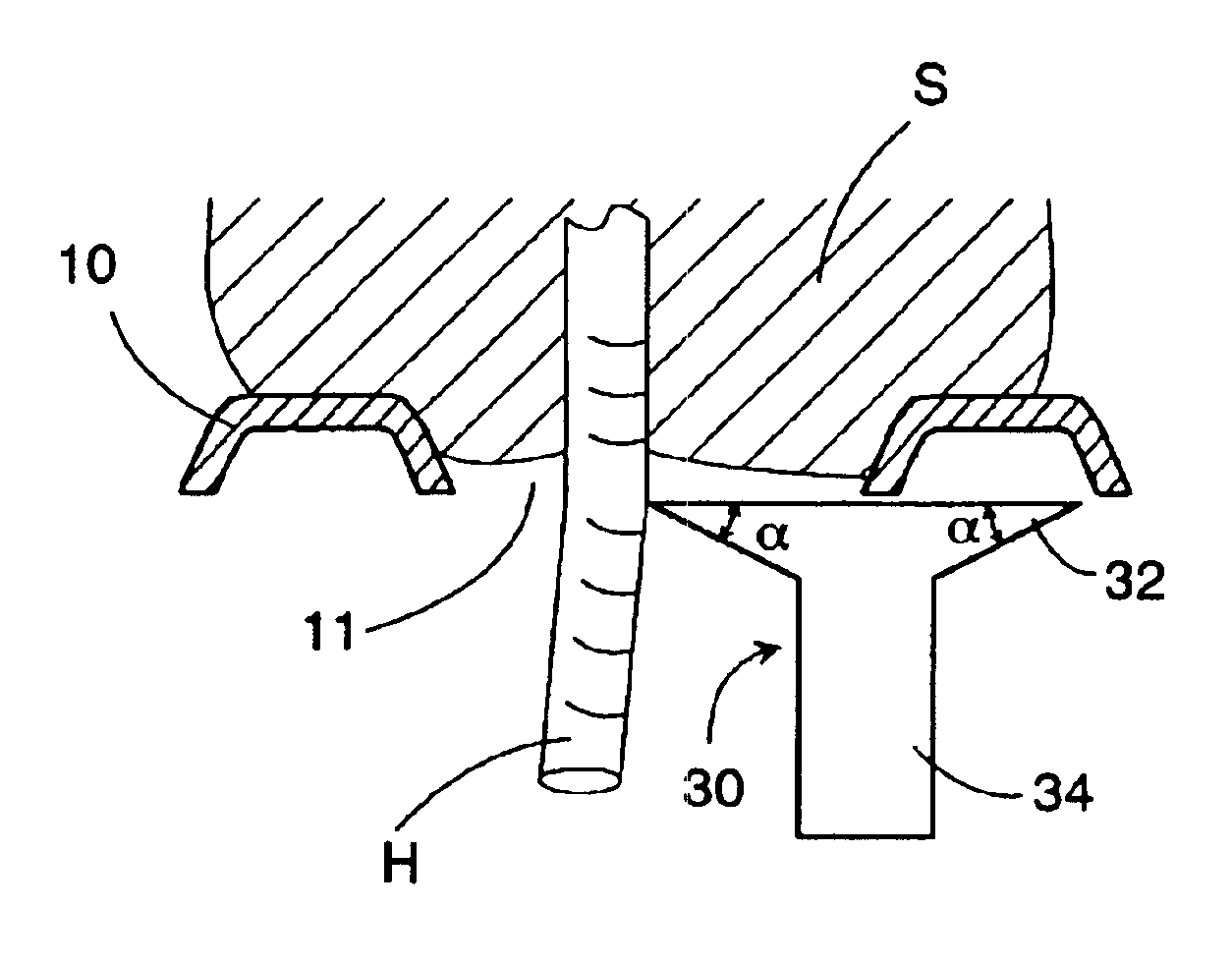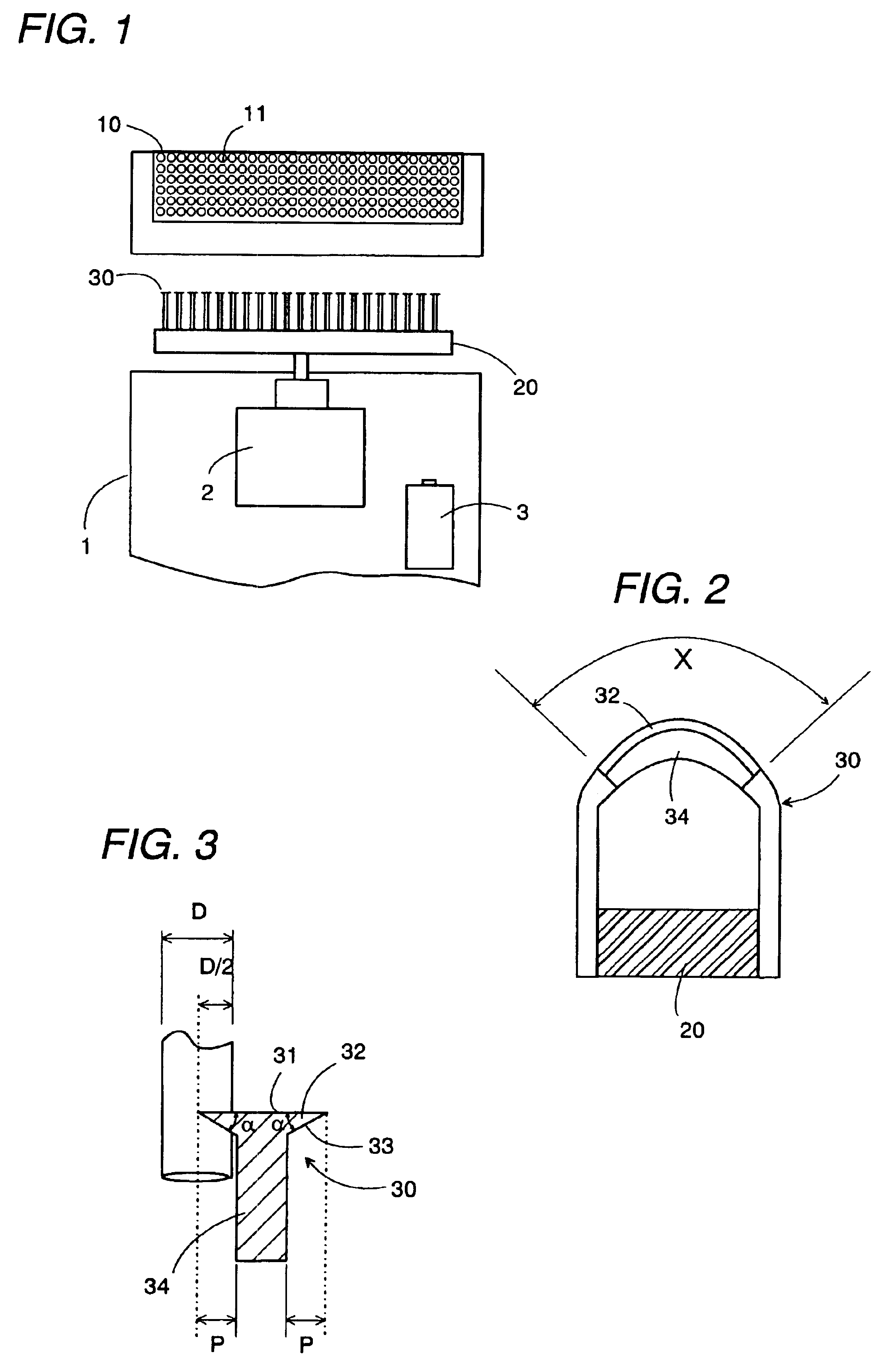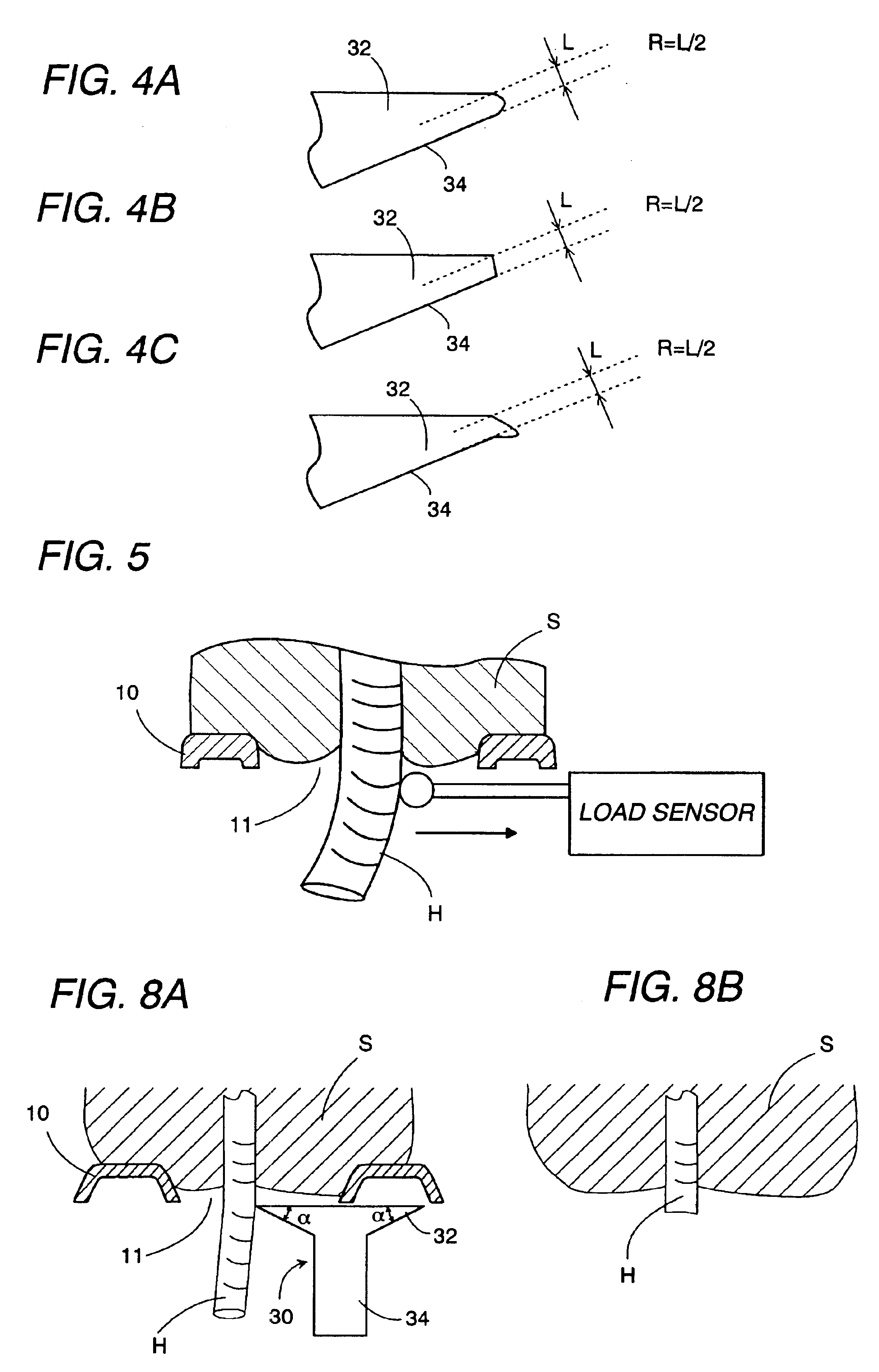Electric razor inner blade unit
a technology of electric razors and inner blades, which is applied in the direction of metal working devices, etc., can solve the problems of requiring a lot of shaving time, and achieve the effect of reducing the strok
- Summary
- Abstract
- Description
- Claims
- Application Information
AI Technical Summary
Benefits of technology
Problems solved by technology
Method used
Image
Examples
Embodiment Construction
[0021]One embodiment of the present invention will be discussed with reference to the attached drawings. The inner cutter for the dry shaver in accordance with the present invention is applied to the shaver of oscillatory type, as shown in FIG. 1, and includes a plurality of blades 30 arranged in a parallel relation with each other on a base 20 of a synthetic resin. The base is connected to a driving source, for example, a motor 2 incorporated in a housing 1 to oscillate the inner cutter relative to an outer cutter 10. The outer cutter 10 has a number of hair introducing apertures 11 entrapping therein the hairs which are to be cut by the blades 30. The outer cutter 10 is secured to the upper end of the housing 1. The inner cutter projecting on the upper end of the housing 1 is driven to oscillate in a direction perpendicular to cutting edges of each blade 30 as discussed later, while being kept in contact with the inside surface of the outer cutter 10. The housing 1 accommodates a ...
PUM
 Login to View More
Login to View More Abstract
Description
Claims
Application Information
 Login to View More
Login to View More - R&D
- Intellectual Property
- Life Sciences
- Materials
- Tech Scout
- Unparalleled Data Quality
- Higher Quality Content
- 60% Fewer Hallucinations
Browse by: Latest US Patents, China's latest patents, Technical Efficacy Thesaurus, Application Domain, Technology Topic, Popular Technical Reports.
© 2025 PatSnap. All rights reserved.Legal|Privacy policy|Modern Slavery Act Transparency Statement|Sitemap|About US| Contact US: help@patsnap.com



